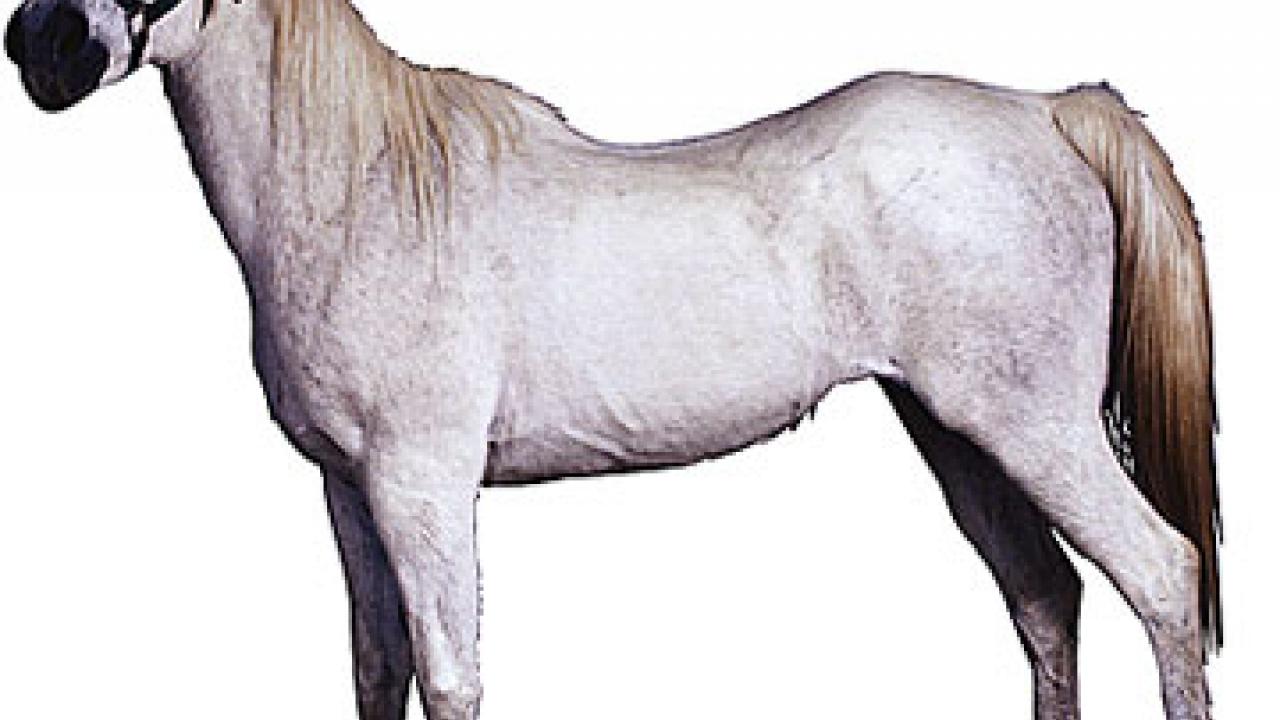Some 200 veterinarians, stem cell researchers and other medical professionals from throughout the United States and abroad will gather March 5-6 in the heart of California’s Central Coast horse region for a groundbreaking conference on the use of stem cell therapy and regenerative medicine to treat horses and other animals.
The inaugural North American Veterinary Regenerative Medicine Conference will be held at the Santa Ynez Valley Marriott in Buellton, about a 30-minute drive north of Santa Barbara. This two-day working meeting will include scientific presentations, live demonstrations and discussion sessions.
Conference opportunities
Researchers and veterinary practitioners will come together to discuss the latest research and practical applications of regenerative medicine. Topics will include new research developments and techniques for harvesting, expanding and preserving stem cells, as well as clinical applications and methods for using stem cells in orthopedics, including treating tendon and ligament injuries.
During a roundtable session, participants will discuss how they are using regenerative medicine in their equine veterinary practices.
Live demonstrations at the Alamo Pintado Equine Medical Center in nearby Los Olivos will highlight stem cell collection techniques from bone marrow and fat, and laboratory processing of bone marrow samples.
The meeting is coordinated by the UC Davis Center for Equine Health and the Alamo Pintado Equine Medical Center. More information and registration are available online at http://www.alamopintado.com/veterinarians/conference/.
Stem cells and regenerative medicine
Regenerative medicine is the field of human and veterinary medicine that involves creating living, functional tissues to repair or replace tissues or organs that have been damaged by injury, disease, aging or birth defects.
In recent years, equine veterinarians have used regenerative therapies to repair wounds and to treat horses suffering from diseases including neuromuscular degeneration and laminitis, an inflammation of the tissue that joins the foot and hoof.
Horses have been one of the first species to benefit from veterinary stem cell therapy.
UC Davis' veterinary stem cell team
The Center for Equine Health at UC Davis is coordinating a collaborative regenerative medicine research study, now in its fourth year. The study is being carried out by a team of 20 UC Davis researchers, including veterinary scientists and members of the UC Davis Department of Biomedical Engineering, led by Distinguished Professor Kyriacos Athanasiou. The scientists are working to develop methods for collecting, processing, storing and administering stem cells to repair bone, tendon and ligament injuries in horses.
These types of injuries are common problems especially for racehorses and other performance horses. The team’s early findings indicate that stem cell treatments may reduce the recurrence of certain tendon and ligament injuries and lessen the progression of arthritis associated with traumatic joint diseases in horses.
This veterinary team, under the direction of UC Davis professor and equine surgeon Larry Galuppo, also has established a working partnership with the UC Davis Health System’s Stem Cell Program in human medicine, directed by Jan Nolta, a medical school professor and one of the nation’s leading stem cell researchers.
Regenerative Medicine Laboratory at UC Davis
In May 2009, the UC Davis School of Veterinary Medicine opened the new Regenerative Medicine Laboratory at the William R. Pritchard Veterinary Medical Teaching Hospital. The laboratory provides a state-of-the art facility for processing, culturing and storing stem cells for use in horses. Since it opened, the lab has been used to process stem cells for treating 109 injured or ill horses. It also stores stem cells for future treatments.
About UC Davis
For more than 100 years, UC Davis has engaged in teaching, research and public service that matter to California and transform the world. Located close to the state capital, UC Davis has 32,000 students, an annual research budget that exceeds $600 million, a comprehensive health system and 13 specialized research centers. The university offers interdisciplinary graduate study and more than 100 undergraduate majors in four colleges — Agricultural and Environmental Sciences, Biological Sciences, Engineering, and Letters and Science. It also houses six professional schools — Education, Law, Management, Medicine, Veterinary Medicine and the Betty Irene Moore School of Nursing.
Media Resources
Pat Bailey, Research news (emphasis: agricultural and nutritional sciences, and veterinary medicine), 530-219-9640, pjbailey@ucdavis.edu
Gregory Ferraro, Center for Equine Health, (530) 752-6433, glferraro@ucdavis.edu
Doug Herthel, Equine Medical Center, (805) 688-6510, info@alamopintado.com
